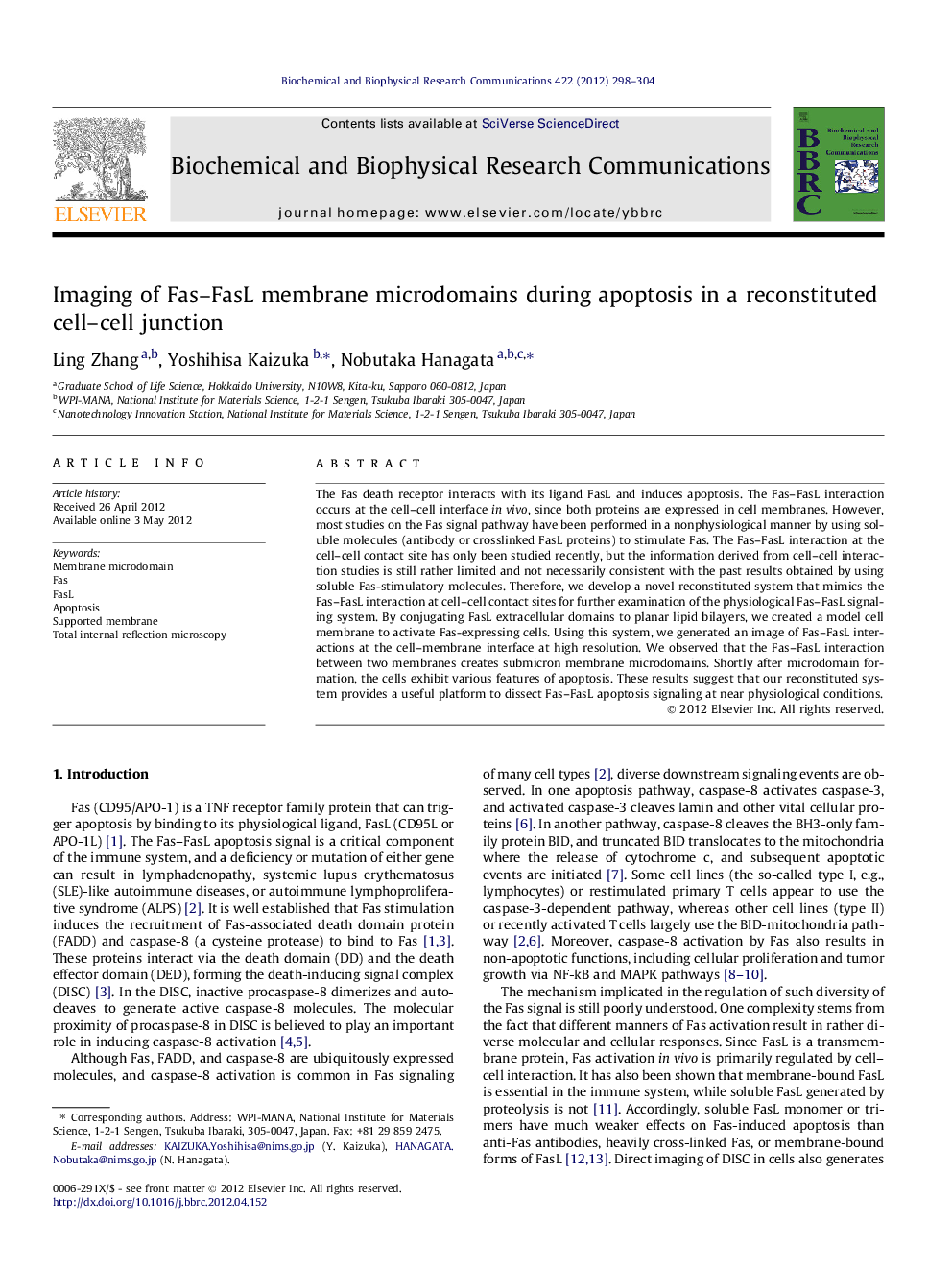| Article ID | Journal | Published Year | Pages | File Type |
|---|---|---|---|---|
| 1929695 | Biochemical and Biophysical Research Communications | 2012 | 7 Pages |
The Fas death receptor interacts with its ligand FasL and induces apoptosis. The Fas–FasL interaction occurs at the cell–cell interface in vivo, since both proteins are expressed in cell membranes. However, most studies on the Fas signal pathway have been performed in a nonphysiological manner by using soluble molecules (antibody or crosslinked FasL proteins) to stimulate Fas. The Fas–FasL interaction at the cell–cell contact site has only been studied recently, but the information derived from cell–cell interaction studies is still rather limited and not necessarily consistent with the past results obtained by using soluble Fas-stimulatory molecules. Therefore, we develop a novel reconstituted system that mimics the Fas–FasL interaction at cell–cell contact sites for further examination of the physiological Fas–FasL signaling system. By conjugating FasL extracellular domains to planar lipid bilayers, we created a model cell membrane to activate Fas-expressing cells. Using this system, we generated an image of Fas–FasL interactions at the cell–membrane interface at high resolution. We observed that the Fas–FasL interaction between two membranes creates submicron membrane microdomains. Shortly after microdomain formation, the cells exhibit various features of apoptosis. These results suggest that our reconstituted system provides a useful platform to dissect Fas–FasL apoptosis signaling at near physiological conditions.
► FasL-bound planar lipid bilayer as a novel model cell membrane. ► Cells interacting with the FasL-bound bilayer form submicron Fas–FasL microdomains. ► The Fas–FasL microdomains are structurally stable for several hours. ► After the Fas–FasL microdomain formation, rapid apoptosis is induced in cells. ► Relatively high concentration of Fas is required to form the microdomains.
